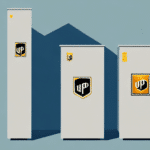What Does Fulfillment Batching Mean?
As an e-commerce business owner, streamlining your order fulfillment process is crucial for saving time and money. One method that has gained significant popularity in recent years is fulfillment batching. But what exactly is fulfillment batching, and how can it benefit your business? In this article, we'll provide an in-depth analysis of fulfillment batching, exploring its benefits, implementation strategies, and best practices to help you optimize your e-commerce operations.
The Basics of Fulfillment Batching Explained
Fulfillment batching refers to the process of grouping multiple orders together for fulfillment. Instead of processing orders one at a time, a fulfillment center batches several orders and fulfills them simultaneously. This approach can lead to more efficient order processing and ultimately lower shipping costs.
One key benefit of fulfillment batching is enhanced inventory management. By grouping orders, fulfillment centers can more easily track inventory levels, ensuring that popular items are always in stock. Additionally, fulfillment batching reduces the risk of errors and delays, as orders are processed in a streamlined and organized manner.
According to a recent industry report, businesses utilizing fulfillment batching have seen a 15% increase in operational efficiency and a 20% reduction in shipping costs.
Why Fulfillment Batching is Important for E-Commerce Businesses
For e-commerce businesses, order fulfillment can be a time-consuming and costly process. By implementing fulfillment batching, businesses can save both time and money by streamlining the order processing and shipping workflow. Fulfillment batching also allows businesses to take advantage of discounted shipping rates from shipping carriers, leading to significant cost savings over time.
In addition to financial savings, fulfillment batching can enhance customer satisfaction. By processing orders in batches, businesses can ensure that orders are shipped out quickly and accurately, resulting in happier customers who are more likely to return for future purchases.
Another advantage of fulfillment batching is improved inventory management. Batching orders allows businesses to better track their inventory levels and avoid overselling products, preventing stockouts and backorders that can frustrate both businesses and customers.
- Streamlined order processing
- Reduced shipping costs
- Improved inventory management
- Enhanced customer satisfaction
How Fulfillment Batching Can Save You Time and Money
Fulfillment batching can save businesses time and money in several ways:
- Reduced Processing Time: By handling multiple orders simultaneously, businesses can decrease the time it takes to pick, pack, and ship each order. This efficiency can lead to faster order processing times, resulting in happier customers and increased repeat business.
- Lower Shipping Fees: Shipping carriers often offer discounted rates for larger batches of shipments. By implementing fulfillment batching, businesses can take advantage of these bulk shipping rates, thereby reducing overall shipping expenses.
- Optimized Inventory Management: Batching orders helps businesses monitor inventory levels more accurately, preventing both stockouts and overstocking. Efficient inventory management reduces warehouse space requirements and lowers inventory holding costs.
- Improved Order Accuracy: Automated batching systems can enhance the accuracy of order fulfillment by ensuring that the correct items are picked and packed for each order. This accuracy minimizes the likelihood of errors and returns, saving businesses time and money in the long run.
Furthermore, according to the Shopify E-commerce Fulfillment Report, businesses that utilize fulfillment batching have experienced up to a 25% increase in overall operational efficiency.
The Different Types of Fulfillment Batching Systems
There are several types of fulfillment batching systems that businesses can adopt, each with its unique advantages:
- Manual Batching: In this system, orders are grouped together based on similar shipping requirements or other criteria manually. This method is often used by smaller businesses with lower order volumes.
- Automated Batching: Technology-based solutions automatically group orders based on various factors such as product weight, size, destination, or shipping deadlines. Automated systems are suitable for businesses with high order volumes and complex fulfillment needs.
- Wave Picking: This method involves grouping orders into "waves" based on the time they need to be shipped. For example, all orders requiring same-day shipping may be processed in one wave, while others are handled in subsequent waves.
- Zone Picking: Orders are grouped based on the location of products within the warehouse. This system minimizes the time workers spend moving between different warehouse zones, increasing picking efficiency.
Choosing the right batching system depends on the specific needs and scale of your e-commerce business. Combining different batching methods can also be an effective strategy to maximize efficiency.
How to Implement Fulfillment Batching in Your E-Commerce Business
Implementing a fulfillment batching system in your e-commerce business involves several key steps:
- Assess Your Current Workflow: Evaluate your existing order processing and shipping workflows to identify inefficiencies and areas that can benefit from batching.
- Select the Right Batching System: Based on your business size, order volume, and specific needs, choose a fulfillment batching system that aligns with your goals. Options range from manual grouping to advanced automated systems.
- Integrate Technology: Invest in the necessary software or hardware to support your chosen batching system. This may include warehouse management systems (WMS), order management software (OMS), or automation tools.
- Train Your Team: Ensure that your staff is well-trained on the new batching processes and technologies to maximize efficiency and minimize errors.
- Test and Optimize: Start with a pilot phase to test the effectiveness of the batching system. Monitor key performance indicators (KPIs) such as order processing time, shipping costs, and error rates, and make adjustments as needed.
Implementing a fulfillment batching system can lead to significant cost savings and efficiency improvements. For instance, businesses that have adopted automated batching systems report up to a 30% reduction in order processing time (source).
It's important to note that while there may be an initial investment in technology and training, the long-term benefits of increased efficiency and cost savings make fulfillment batching a worthwhile investment for many e-commerce businesses.
The Pros and Cons of Fulfillment Batching
Like any business strategy, fulfillment batching comes with its own set of advantages and potential drawbacks:
Pros:
- Increased Efficiency: Processing multiple orders simultaneously reduces the time spent on picking, packing, and shipping, leading to faster fulfillment.
- Cost Savings: Bulk shipping rates and optimized inventory management result in lower overall shipping and holding costs.
- Improved Accuracy: Automated systems can enhance order accuracy, reducing the likelihood of errors and returns.
- Scalability: Fulfillment batching systems can easily scale with your business as order volumes grow.
- Enhanced Customer Satisfaction: Faster and more accurate order fulfillment leads to happier customers and increased repeat business.
Cons:
- Initial Investment: Implementing an automated batching system may require significant upfront costs for software, hardware, and training.
- Complexity: Managing a batching system can be complex, especially for businesses with diverse product lines and shipping requirements.
- Inventory Errors: If inventory is not accurately tracked during the batching process, it can lead to stockouts or overstocking issues.
- Dependency on Technology: Relying heavily on automated systems may pose challenges if there are technical issues or system failures.
To mitigate these drawbacks, it's essential to have a reliable inventory management system in place and to provide thorough training for your staff. Additionally, starting with a pilot program can help identify and address potential issues before full-scale implementation.
Common Mistakes to Avoid When Implementing Fulfillment Batching
When implementing a fulfillment batching system, it's important to avoid common mistakes that can lead to inefficiencies or errors in the order processing and shipping process:
- Poor Order Grouping: Failing to properly group orders based on criteria such as shipping destination, product type, or priority can negate the benefits of batching.
- Inadequate Equipment: Investing in equipment or software that isn't suited to your business needs can hinder the effectiveness of your batching system.
- Neglecting Quality Control: Ignoring the importance of quality checks can lead to increased errors and customer dissatisfaction.
- Overlooking Item Size and Weight: Not considering the size and weight of items can result in inefficient batching and higher shipping costs.
- Poor Labeling and Organization: Failing to properly label and organize batches can cause confusion and delays in the shipping process.
To avoid these pitfalls, ensure that your batching strategy is well-planned and aligns with your overall business objectives. Regularly review and adjust your processes based on performance data and feedback.
For more insights on effective inventory management, visit our guide on overcoming e-commerce challenges with efficient inventory management systems.
Best Practices for Successful Fulfillment Batching
To ensure the success of a fulfillment batching system, businesses should adhere to a set of best practices:
- Evaluate Your Current Workflow: Identify bottlenecks and inefficiencies in your existing order processing and shipping procedures.
- Choose the Right Batching System: Select a system that aligns with your business size, order volume, and specific needs. Consider both manual and automated options.
- Implement Quality Control Measures: Establish protocols to verify the accuracy of orders before they are shipped. This can include double-checking item counts and ensuring correct labeling.
- Train Your Team: Provide comprehensive training for your staff on the new batching processes and technologies to ensure smooth implementation.
- Maintain Clear Communication: Establish effective communication channels between warehouse staff, shipping carriers, and customer service teams to coordinate order fulfillment seamlessly.
- Monitor and Analyze Performance: Regularly review key performance indicators (KPIs) such as order accuracy, processing time, and shipping costs to identify areas for improvement.
- Leverage Technology: Utilize advanced software and automation tools to enhance the efficiency and accuracy of your batching system.
By following these best practices, businesses can optimize their fulfillment batching processes, leading to increased operational efficiency and improved customer satisfaction.
For a comprehensive checklist on implementing fulfillment best practices, refer to our Fulfillment Best Practices Guide.
How Technology is Changing the Landscape of Fulfillment Batching
Advancements in technology have dramatically transformed the way businesses approach order fulfillment and shipping. Today, businesses can leverage sophisticated fulfillment batching systems that utilize artificial intelligence (AI) and machine learning (ML) to group orders quickly and efficiently. These technologies not only enhance the speed of order processing but also reduce the likelihood of errors and delays in the shipping process.
One of the most significant benefits of using technology in fulfillment batching is the ability to optimize shipping routes. With the help of GPS tracking and real-time traffic data, businesses can determine the most efficient routes for their delivery trucks. This optimization not only saves time and fuel costs but also reduces the carbon footprint of the shipping process.
Additionally, technology allows for better tracking and visibility of packages. Businesses can provide customers with accurate delivery estimates and real-time updates on the status of their orders, enhancing the overall customer experience.
- Automation Tools: Automated picking and packing systems can significantly increase the speed and accuracy of order fulfillment.
- Data Analytics: Analyzing fulfillment data helps businesses identify trends, forecast demand, and make informed decisions about inventory management.
- Integration with E-commerce Platforms: Seamless integration between fulfillment systems and e-commerce platforms ensures real-time synchronization of orders and inventory levels.
- Robotics: The use of robotics in warehouses can expedite the picking and packing process, allowing for higher order volumes to be handled efficiently.
According to a Forbes article, businesses that adopt AI-driven fulfillment systems see up to a 40% increase in processing speed and a 30% reduction in operational costs.
Case Studies: Successful Implementation of Fulfillment Batching in E-Commerce Businesses
Several e-commerce giants have successfully implemented fulfillment batching systems to enhance their order processing and shipping workflows:
Amazon
Amazon employs a highly sophisticated fulfillment batching system capable of processing millions of orders each year. Utilizing advanced algorithms and robotics, Amazon can efficiently group and fulfill orders, ensuring fast and accurate delivery to customers worldwide.
Zappos
Zappos leverages fulfillment batching to manage its extensive inventory of footwear and apparel. By batching orders based on similar shipping destinations and product types, Zappos minimizes shipping times and reduces costs, enhancing customer satisfaction.
Wayfair
Wayfair, a leading online home goods retailer, uses wave picking systems to batch orders according to shipping deadlines. This approach allows Wayfair to handle large volumes of orders during peak seasons without compromising on delivery speed or accuracy.
Chewy
Chewy, an online pet supplies retailer, utilizes automated batching systems to manage its diverse product range. By grouping orders based on product categories and shipping requirements, Chewy ensures efficient fulfillment and timely delivery to pet owners across the country.
Implementing a fulfillment batching system can lead to significant cost savings and operational efficiencies for e-commerce businesses. By batching orders strategically, companies can reduce the number of individual shipments, thereby lowering shipping costs and minimizing environmental impact. Additionally, efficient batching enhances inventory management by grouping orders that require similar products, reducing the need for multiple trips to the warehouse.
However, it's essential for businesses to carefully consider their batching strategies to align with their unique goals. For example, companies prioritizing speed of delivery may implement batching systems that prioritize urgent orders, while those focusing on cost savings may optimize for bulk shipping rates.
The success of a fulfillment batching system hinges on its ability to adapt to the specific needs and priorities of each business. Regularly reviewing and refining your batching strategies can ensure continued efficiency and customer satisfaction.
Future Outlook: The Role of Fulfillment Batching in the E-Commerce Industry
As e-commerce continues to grow and evolve, the role of fulfillment batching in the industry is set to become even more critical. Streamlining the order processing and shipping workflows through effective batching not only saves time and money but also enhances customer satisfaction, which is paramount in a highly competitive market.
With ongoing advancements in technology, businesses can expect to see even more sophisticated fulfillment batching systems that leverage machine learning and artificial intelligence to process orders with greater speed and accuracy. These technologies will enable businesses to:
- Predict Demand: AI can forecast product demand more accurately, allowing businesses to adjust their inventory and batching strategies proactively.
- Enhance Personalization: Machine learning algorithms can tailor batching processes to individual customer preferences, improving the overall shopping experience.
- Increase Automation: Continued automation in warehouses will further reduce the need for manual intervention, minimizing errors and increasing efficiency.
- Improve Sustainability: Optimized shipping routes and reduced packaging waste through efficient batching contribute to more sustainable business practices.
According to a McKinsey report, the integration of AI and ML into fulfillment processes is expected to boost operational efficiency by up to 35% over the next five years.
By embracing these technological advancements, e-commerce businesses can stay ahead of the curve, providing faster, more reliable, and more cost-effective fulfillment services to their customers. The future of fulfillment batching looks promising, with endless opportunities for innovation and growth in the e-commerce industry.
Implementing a fulfillment batching system allows e-commerce businesses to save time and money, streamline their order processing and shipping workflows, and improve customer satisfaction. Whether you opt for a manual system or a technology-based solution, evaluating your current workflow and implementing best practices are essential steps to ensure the success of your fulfillment batching system. With ongoing advancements in technology, the future is bright for fulfillment batching in the e-commerce industry.




















